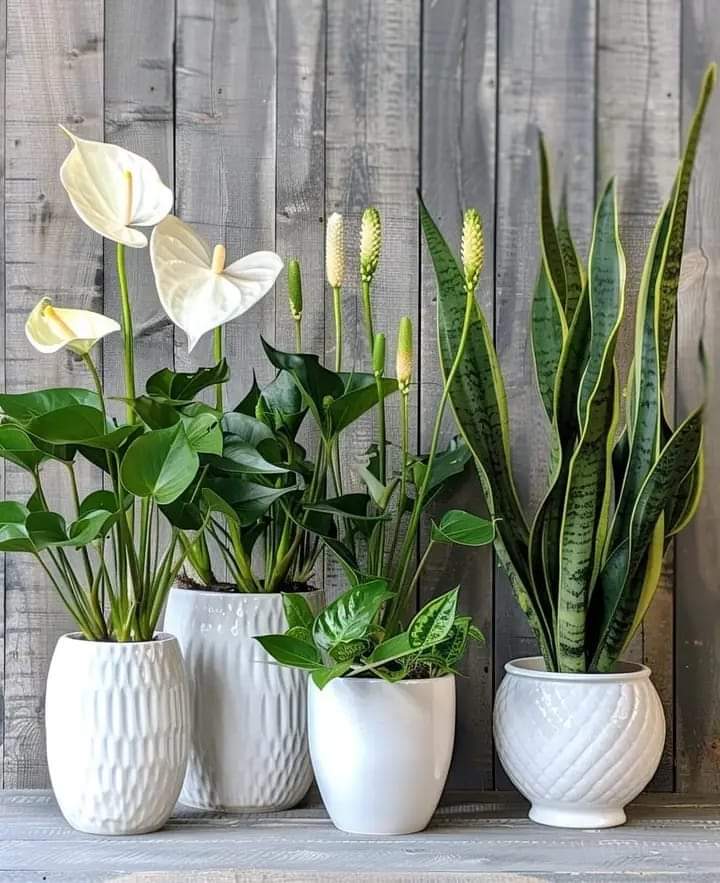Here are seven indoor plants known for their air-purifying properties:
- Spider Plant (Chlorophytum comosum):
- Spider plants are excellent air purifiers that remove formaldehyde, xylene, and toluene from the air.
- They are easy to grow and maintain, making them ideal for beginners.
- Peace Lily (Spathiphyllum spp.):
- Peace lilies are known for their ability to remove mold spores from the air, making them great for allergy sufferers.
- They thrive in low to moderate light conditions and prefer consistently moist soil.
- Boston Fern (Nephrolepis exaltata):
- Boston ferns are effective at removing pollutants like formaldehyde and xylene.
- They require high humidity and indirect light, making them suitable for bathrooms or kitchens with indirect sunlight.
- Snake Plant (Sansevieria trifasciata):
- Snake plants are hardy and tolerant of low light conditions, making them easy to care for.
- They absorb toxins such as formaldehyde, nitrogen oxide, benzene, and trichloroethylene from the air.
- Aloe Vera (Aloe barbadensis):
- Aloe vera not only has medicinal properties but also removes formaldehyde and benzene from the air.
- It requires bright, indirect light and infrequent watering.
- Areca Palm (Dypsis lutescens):
- Areca palms are effective in removing formaldehyde, xylene, and toluene from indoor air.
- They prefer bright, indirect light and regular watering.
- Dracaena (Dracaena spp.):
- Dracaenas come in various species and are effective in removing formaldehyde, benzene, xylene, and trichloroethylene.
- They thrive in moderate light conditions and require regular watering. Tips for Air-Purifying Plants:
- Placement: Position plants where they will receive adequate light according to their specific needs.
- Care: Follow care instructions for each plant to ensure optimal growth and air-purifying benefits.
- Rotation: Rotate plants occasionally to ensure all sides receive adequate light and airflow.
- Monitor Soil Moisture: Avoid overwatering, as it can lead to mold growth and other issues.
By incorporating these indoor plants into your living spaces, you can potentially reduce dust and allergens while adding greenery and beauty to your home.
Ctto
